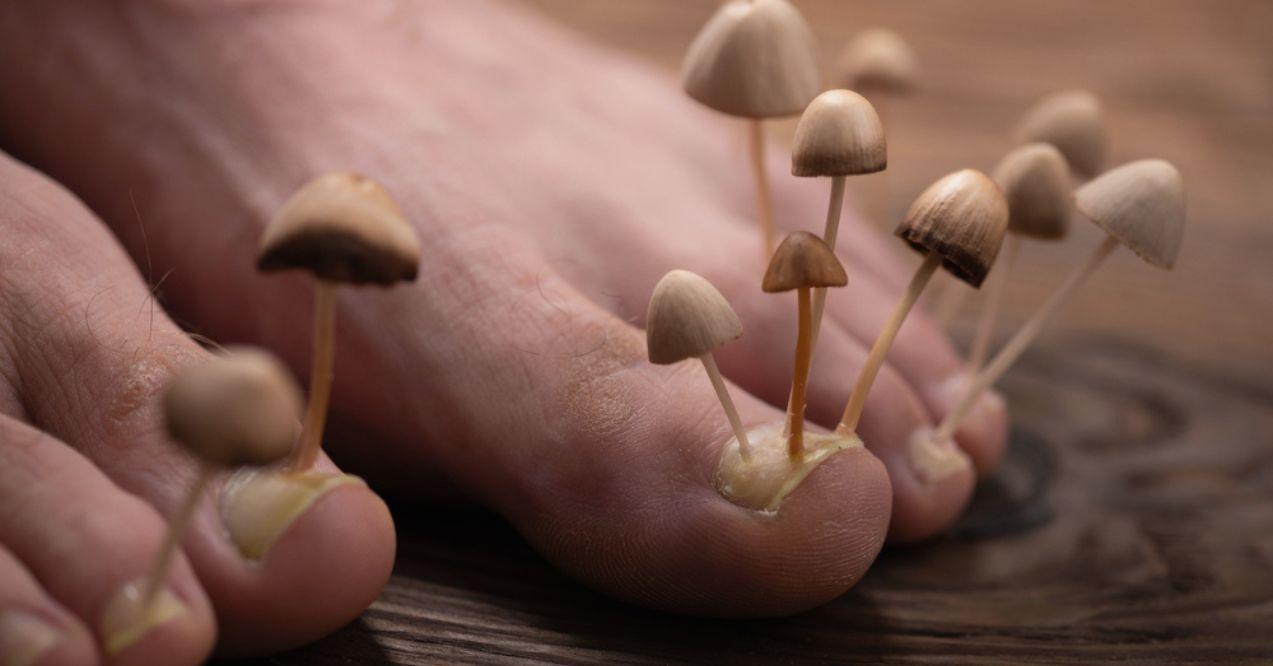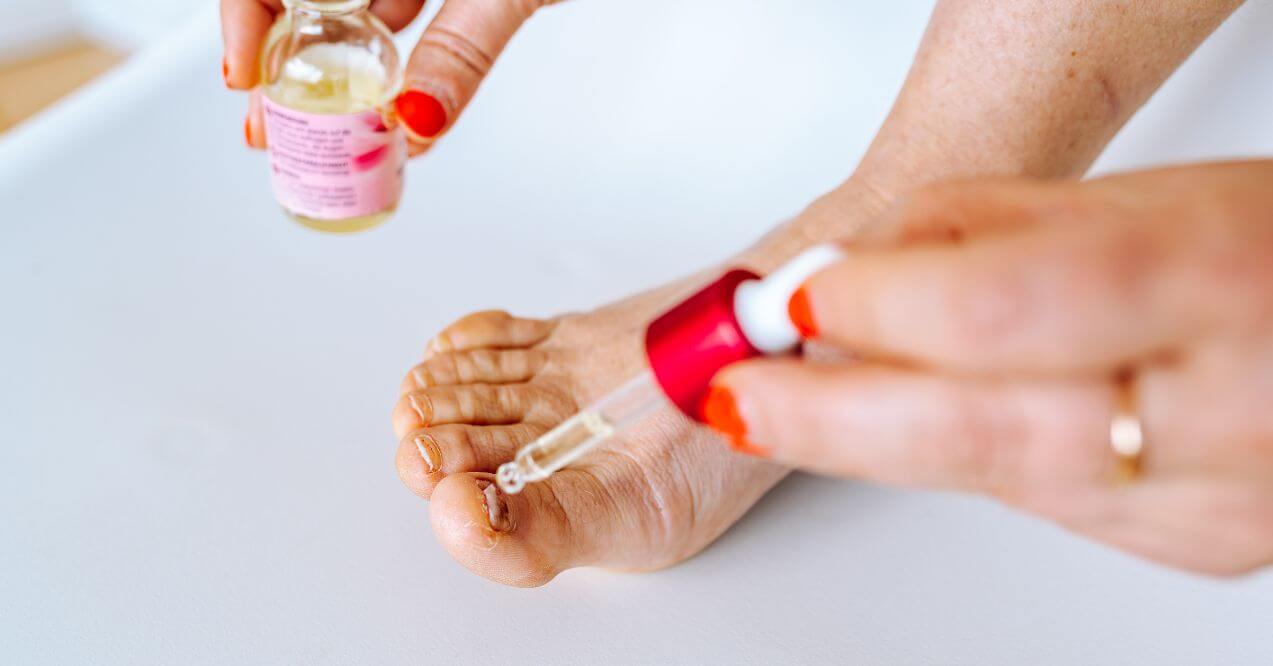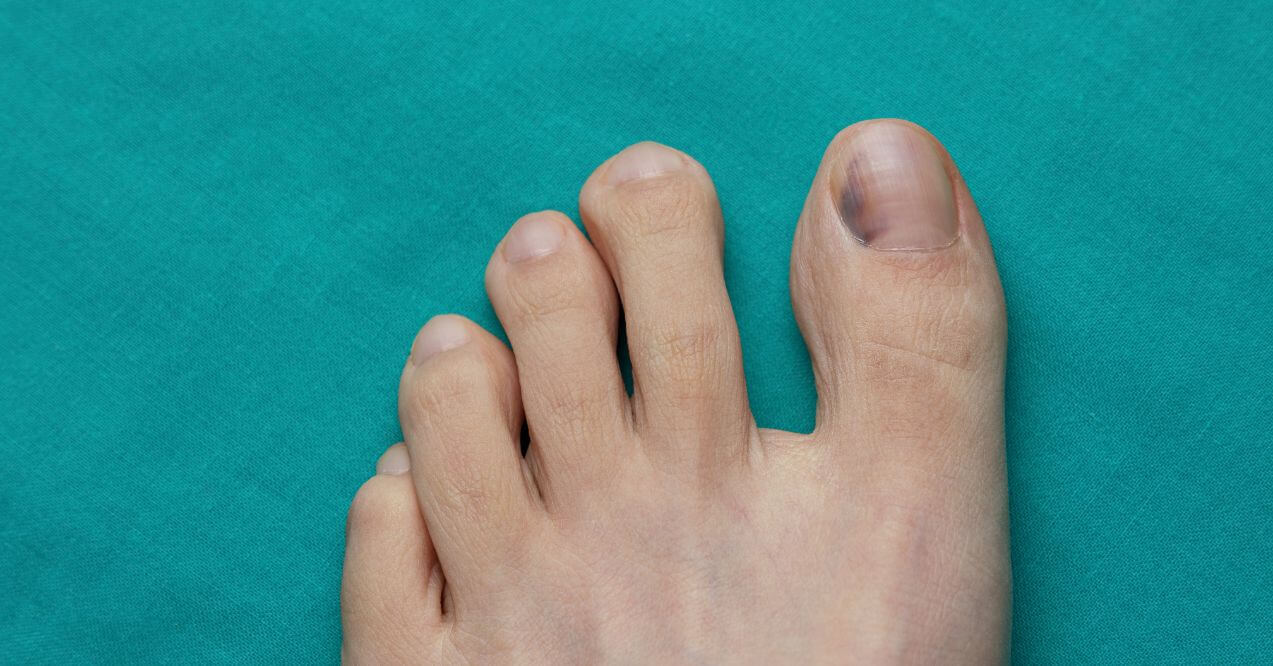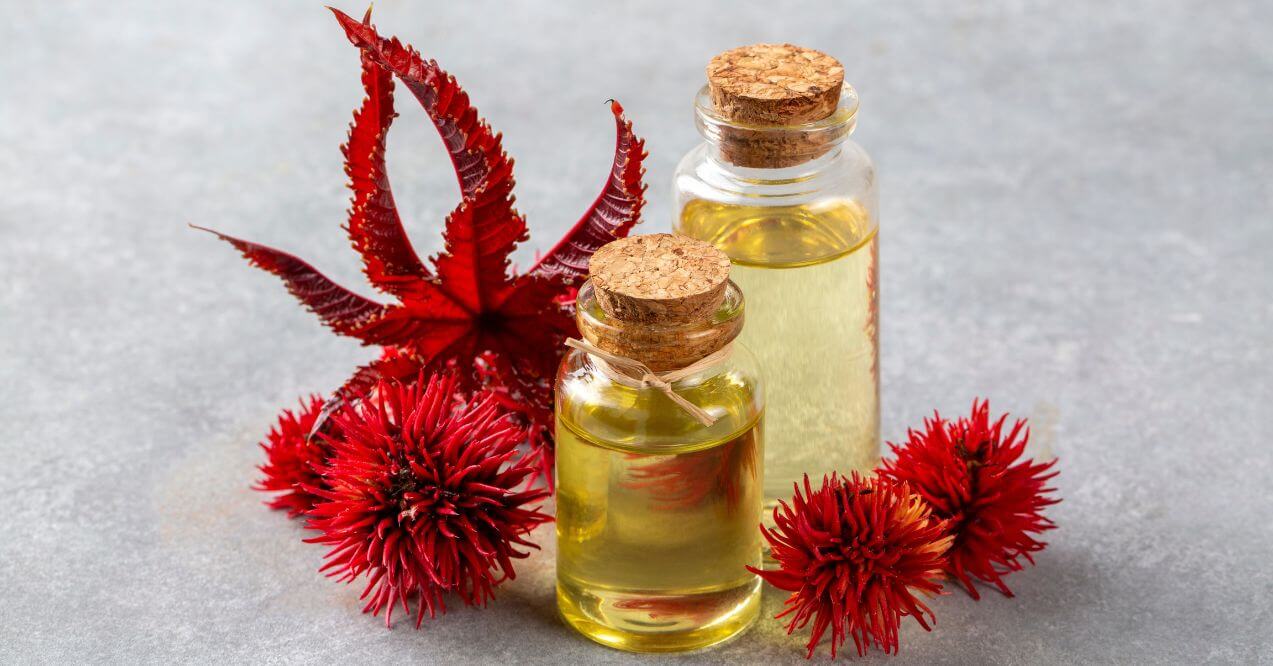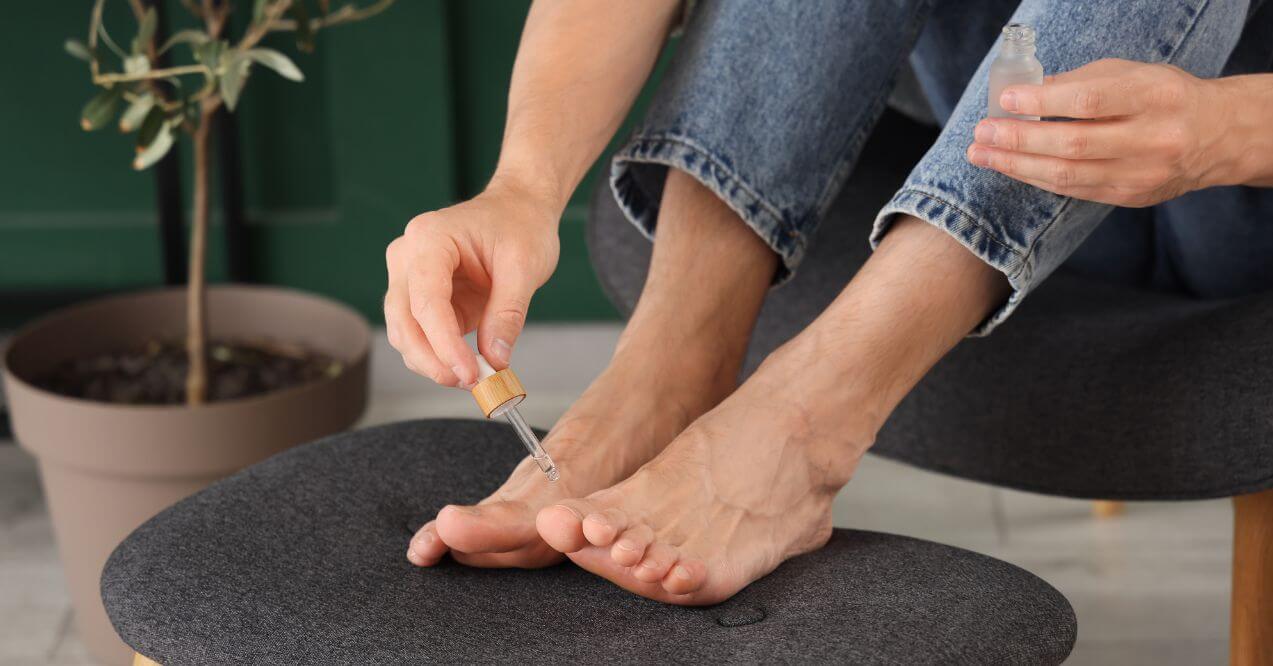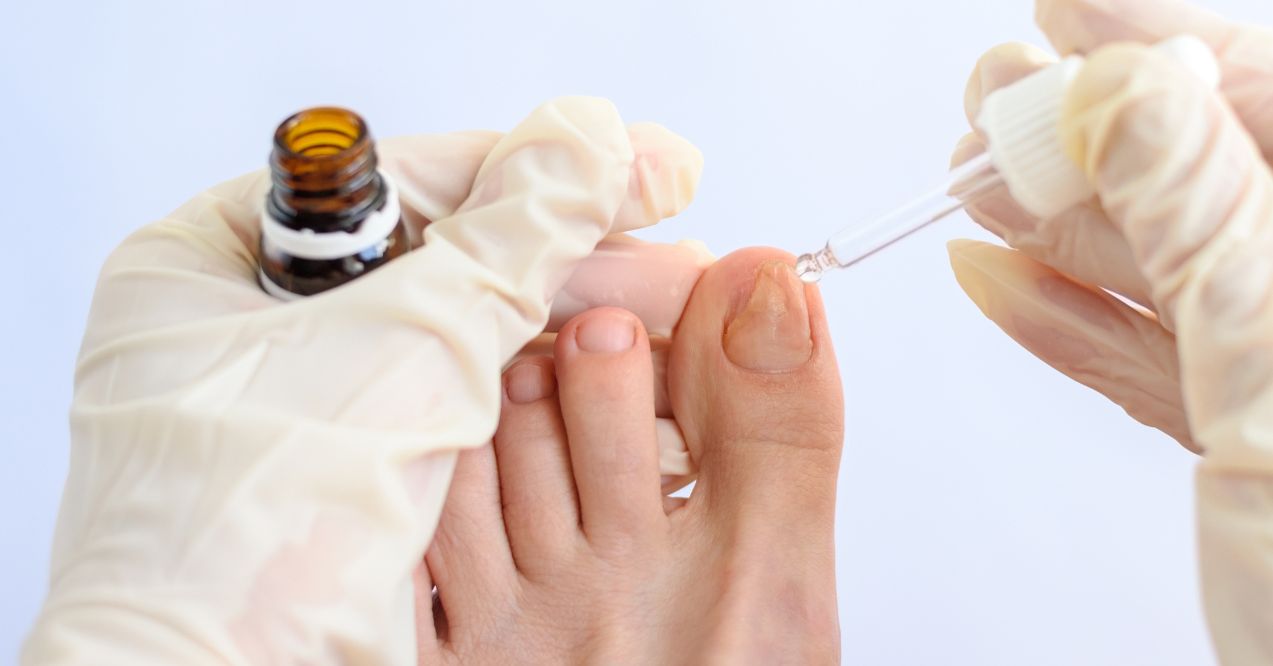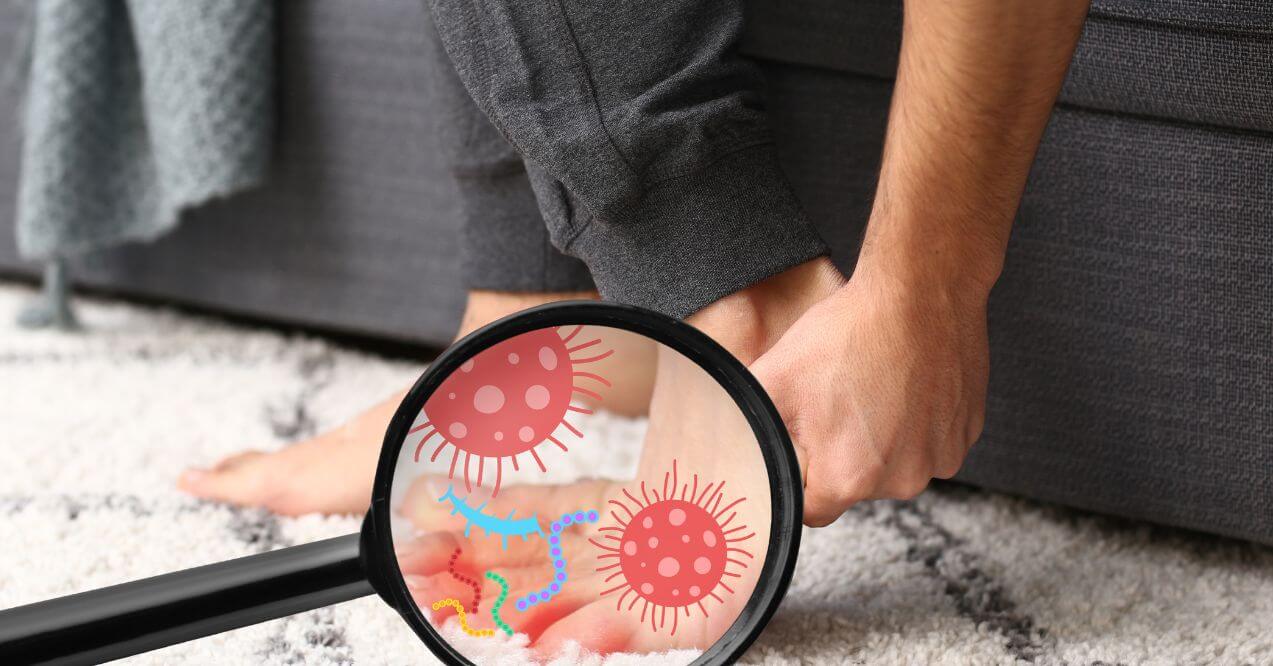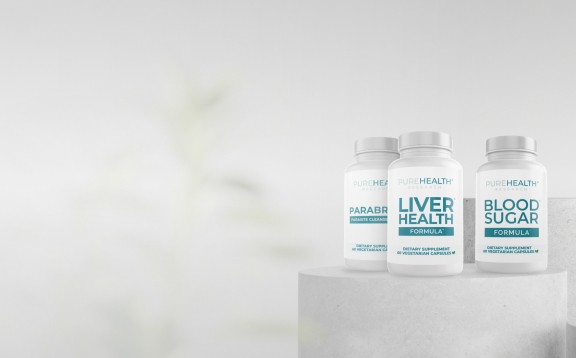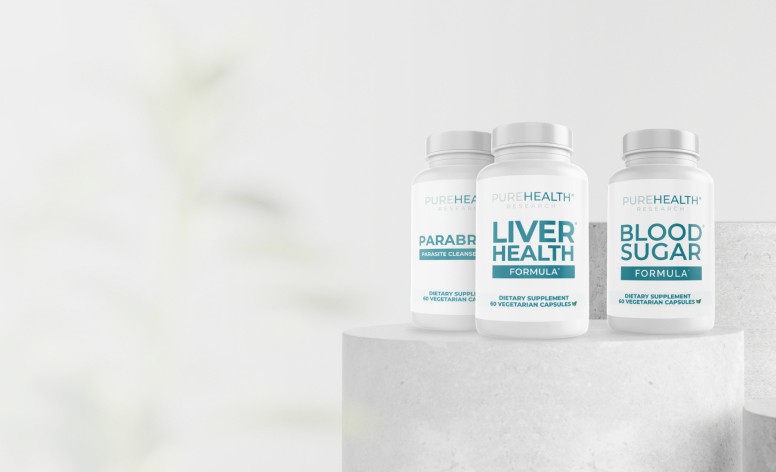What Causes Toenail Fungus? 11 Reasons
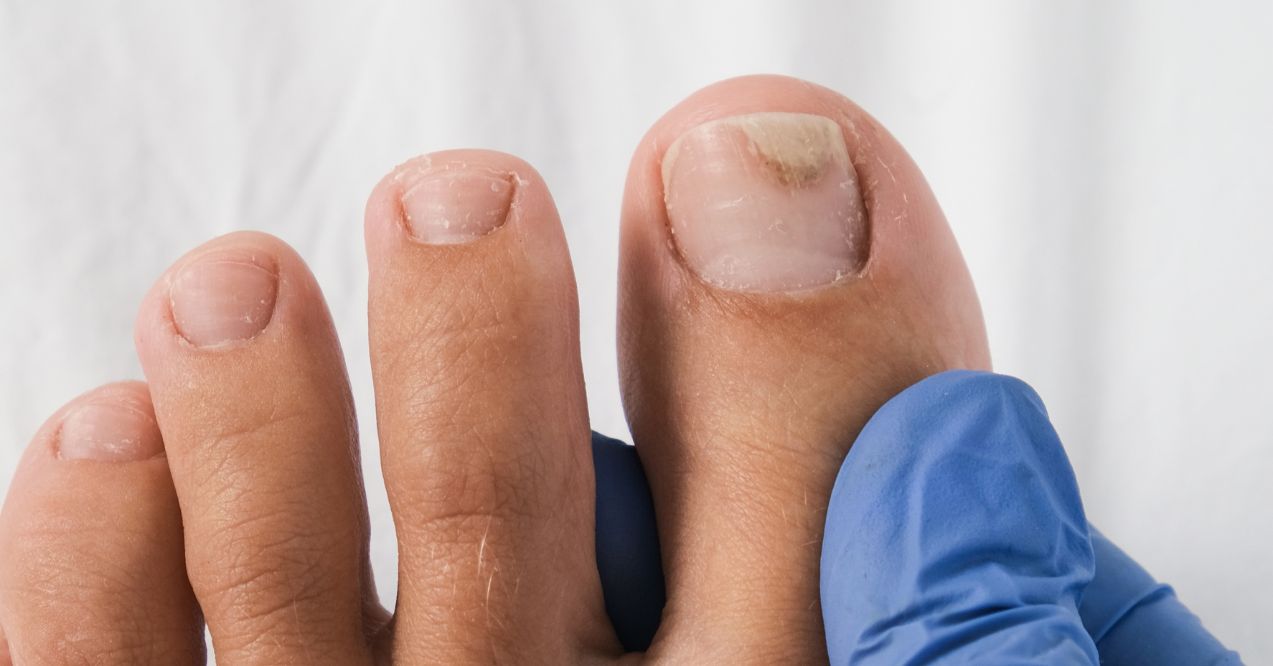

Toenail fungus. We’ve all seen it and we know that we don’t want that on our feet! Knowing what causes toenail fungus and what to do to prevent it is the best way to keep it out of our bodies.
Toenail fungus is an infection of the toenail(s) that can cause them to turn yellow or white and that can make them grow thick or uneven. You might also notice a foul odor coming from your toenails. Or, your nails could begin lifting off of the nailbed and seem to be at risk of falling off completely. Even though toenail fungus can cause thick growth, that growth is often brittle and uneven.
If left untreated, toenail fungus can spread and be more difficult to get under control. The good news, though, is that if you catch it quickly, it’s an easy fix.
What Causes Toenail Fungus
Toenail fungus is often characterized by discoloration, thickening, and crumbling of the nails, and can be a source of discomfort and embarrassment. But what exactly invites various types of toenail fungus into our lives? The causes are many and varied, ranging from environmental factors to personal habits and health conditions.
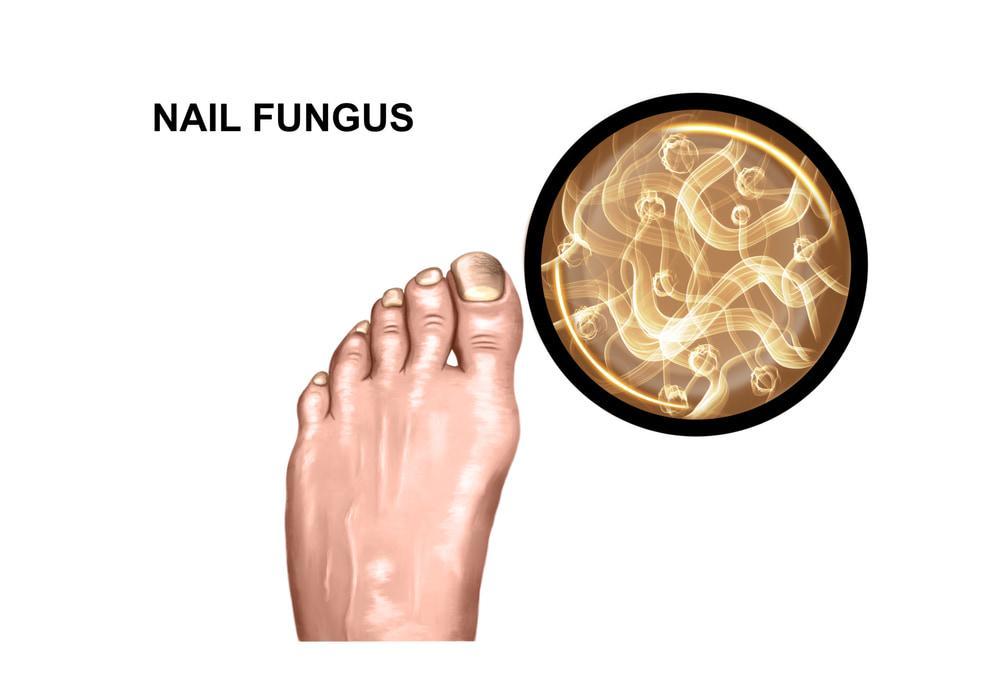
Let’s explore 11 key factors that can set the stage for toenail fungus. By understanding these triggers, you can take proactive steps to protect your toenails and maintain their health and appearance.
1. Warm and Moist Environments
Fungi are akin to sun-seeking tourists, reveling in warm, moist climates. This is precisely why toenail fungus often makes its unwelcome debut during the sultry summer months. Regular visits to places like gym showers or swimming pools can inadvertently roll out the red carpet for toenail fungus.
It’s important to remember that these environments are hotspots for fungal growth. Therefore, taking preventative measures such as wearing shower shoes or flip flops and thoroughly drying your feet afterwards can help keep toenail fungus at bay.
2. Tight, Closed-Toe Shoes
Your fashionable yet snug shoes could be masquerading as a fungal utopia. Shoes that are too tight or lack adequate ventilation create a perfect breeding ground for fungi. To fend off toenail fungus, it’s essential to choose footwear that not only fits well but also promotes breathability.
Opting for shoes made of natural materials like leather or canvas, and alternating between different pairs to allow them to air out, can significantly reduce your risk of developing toenail fungus.
3. Poor Hygiene
Overlooking foot hygiene can inadvertently pave the way for toenail fungus. Maintaining clean and dry feet is a straightforward yet potent measure to ward off fungal infections. This becomes even more critical if you’re dealing with a skin condition like athlete’s foot, as the stubborn fungus can easily migrate from one area to another.
Regularly washing your feet, drying them thoroughly, and using antifungal powders can help maintain a fungus-free environment.
4. Weakened Immune System
A compromised immune system can transform you into a prime target for toenail fungus. Conditions like diabetes or HIV, or medications that suppress your immune system, can leave you more susceptible to these infections.
Regular check-ups, maintaining a healthy lifestyle, and following your doctor’s advice can help strengthen your immune system and reduce your vulnerability to toenail fungus.
5. Age
As we navigate through life, our nails undergo changes too. They tend to become thicker and more susceptible to fungal infections. This occurs because aging nails become more porous, providing an easy access point for fungi.
Regular nail care, including keeping your nails trimmed and clean, can help prevent toenail fungus. Additionally, using antifungal nail lacquers can provide an extra layer of protection.
6. Injury to the Nail or Skin
Even a minor injury can provide an entry point for fungi. If you’ve had a toenail injury or a skin break near your toenail, it’s crucial to keep the area clean and monitor it for signs of fungal infection.
Using an antiseptic to clean the wound and keeping it covered can help prevent infection. If you notice any signs of toenail fungus, such as discoloration or thickening of the nail, it’s important to seek medical attention promptly.
7. Genetics
Some individuals are genetically predisposed to fungal infections. If your family tree reveals a history of toenail fungus, it’s crucial to take extra precautions to prevent infection. Regular foot hygiene, wearing breathable footwear, and using antifungal products can help you stay one step ahead of toenail fungus. Remember, your genes may load the gun, but your lifestyle pulls the trigger.
8. Circulatory Problems
Conditions that affect your circulation, such as peripheral artery disease, can escalate your risk of toenail fungus. Poor circulation can impede your body’s immune system from reaching and combating infections in your feet.
Regular exercise, a healthy diet, and maintaining a healthy weight can help improve circulation and bolster your body’s defenses against toenail fungus.
9. Sweaty Feet
Excessive sweating can create a moist environment that fungi find irresistible. If your feet tend to sweat profusely, using antifungal powders and changing socks regularly can help keep fungus at bay. Opting for moisture-wicking socks and breathable shoes can also help keep your feet dry and less appealing to fungi.
10. Nail Psoriasis
This chronic skin condition can cause pitting, thickening, or discoloration of the nails, which can often be mistaken for toenail fungus. However, having nail psoriasis can also increase your risk of developing a fungal infection.
Regular nail care, using prescribed treatments, and monitoring your nails for changes can help manage nail psoriasis and prevent secondary fungal infections.
11. Sharing Personal Items
Using shared or unsterilized manicure or pedicure tools, or wearing someone else’s shoes or socks, can expose you to toenail fungus. It’s important to ensure your nail tools are clean and sterilized, and avoid sharing personal items. If you frequent nail salons, choose those that follow strict hygiene practices. Remember, when it comes to personal items, sharing isn’t always caring.
Understanding the causes of toenail fungus is the first step towards effective prevention and treatment. As we’ve seen, factors such as warm, moist environments, tight footwear, poor hygiene, a weakened immune system, and even genetics can all play a role in fostering this condition.
By being aware of these triggers and taking appropriate preventative measures, you can significantly reduce your risk of developing toenail fungus. However, if you do notice signs of an infection, it’s important to seek medical attention promptly.
Treatment of early stage of toenail fungus can help prevent the spread of the fungus and protect your nails from further damage. Remember, your toenails are an important part of your overall health and well-being, so give them the care and attention they deserve.
Treating Toenail Fungus
Treating nail fungus doesn’t have to be a big deal if you catch it early and have the proper treatments on hand. Supplements for toenail fungus can be an easy, efficient way to help support your body’s defenses and keep fungal infections at bay. It’s important to choose formulas specifically designed to address fungal issues and support healthy nail regrowth, helping reduce the chance of recurrence.
These supplements are convenient for daily use, working from within to support your immune system and help your body fight off fungal overgrowth naturally. Combined with proper hygiene and keeping your feet clean and dry, they offer a comprehensive way to protect nail health.
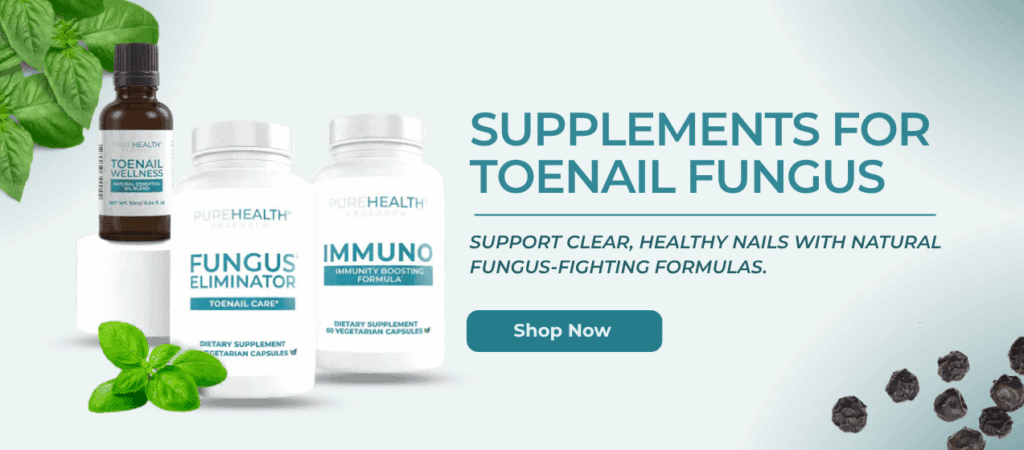
If you don’t see results right away, this is normal. The discoloration, thickness, and brittleness of the nail won’t “heal” once it’s already been changed; you have to wait to see clean growth come in. It can take a while for new, healthy growth to come through, especially if the nail has been “sick” for months. Keep applying the topical treatment until you see a fully clear, clean, normal nail grow in.
Sometimes, though, medical attention is necessary. For example, if you have diabetes or circulatory problems, you should always turn to a medical professional first as infections can cause secondary issues and complications quickly. At-home treatments will help relieve the common symptoms of odor, pain, and discoloration while you wait to get in to see a podiatrist, though, if the infection is severe.
Getting an appointment with a podiatrist can take a long time and can be costly, so you want to have options to treat nail fungus at home before having to go to a doctor as well as have something available while you wait. In addition to topical treatments, toenail fungus supplements can provide internal support to address the issue from within, offering a comprehensive approach to recovery. You can also read our article on how to know if the fungus is dying.
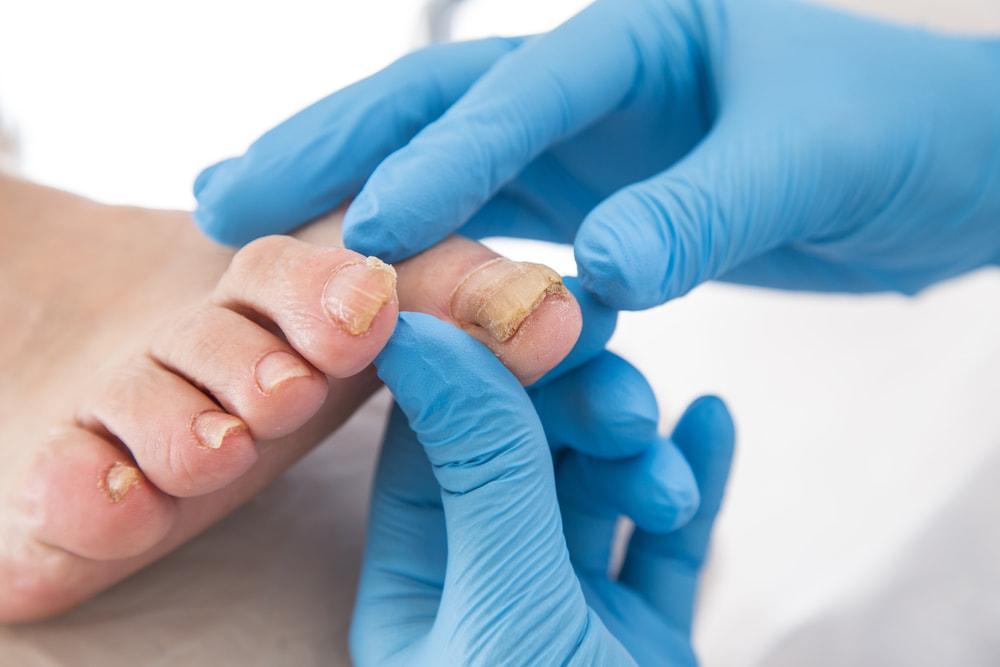
The best treatment is prevention. There are plenty of ways to make sure that you’re keeping your feet healthy and clean.
- If you wear tight-fitting shoes or you sweat in them daily, spray them with an antifungal to kill the bacteria before it can grow in your shoes.
- Wash your feet regularly with antibacterial soap, especially if they come into contact with surfaces where many other people walk barefoot.
- Keep your feet dry with powder after showering (and use the powder in your shoes!).
- Stay away from unclean or unvetted salons that can’t show you how they disinfect and sanitize their instruments.
- Choose socks that wick away moisture and keep your feet dry.
Important Things to Remember
You are in control of what touches your feet!
Use your own sandals in the shower at the gym, at work, and at public pools; if you don’t let your feet touch the same floor as hundreds of other people, you’re lowering your chances of contracting fungal bacteria.
If you enjoy getting pedicures, remember that the tools they use touch other feet all day. Ask the technicians how they sanitize their instruments to prevent contamination.
If you have hangnails or small cuts or scrapes on your feet, it’s more likely that bacteria can enter. If your feet are injured, even in a small way, keep them protected with clean, dry bandages.
People with diabetes have circulatory issues that can make infection more serious. Keep a close eye on your limbs, hands, and feet for signs of fungal infection; see a doctor at the first sign.
As people age, their nails dry out. This lack of moisture causes cracks in the nail that can make them prone to infection. (This might be why you associate toenail fungus with older people such as your grandparents!) If you’re getting on in years, take extra good care of your feet.
This bacteria spreads, and spreads fast! If you come down with athlete’s foot, ringworm, or jock itch, remember that anything touching those areas can spread the infection to other parts of your body. Treat early to prevent spread!
Final Thoughts
Knowing what causes foot fungus makes it easier to prevent it from happening in the first place. However, if your nails begin to turn thick, white, or yellow and you know something is growing underneath your toenails, grab supplements for toenail fungus as soon as possible and nip it in the bud! You’ll be back to showing off your clean, healthy feet in no time.
Yes, besides toenail fungus, there are other fungal infections like athlete’s foot, ringworm, and jock itch. These conditions are caused by similar fungi and can spread from one part of the body to another if not treated promptly.
Toenails can turn white or become thick and yellow due to fungal nail infections. The discoloration, thickness, and brittleness are signs of the nail being affected by the fungus. Other conditions, like nail psoriasis, can also cause similar symptoms but can increase the risk of a fungal infection.
Prevention is key when it comes to toenail fungus. Some preventative measures include:
Keeping feet clean and dry.
Wearing breathable shoes and moisture-wicking socks.
Avoiding sharing personal items like shoes or nail tools.
Using antifungal powders or sprays.
Wearing sandals in public showers or pools.
Ensuring nail salons follow strict hygiene practices.
Early detection and treatment are crucial for toenail fungus. Over-the-counter treatments like the Fungus Eliminator by PureHealth Research can be effective. However, for severe infections or if you have underlying health conditions like diabetes, it’s essential to seek medical attention. Treatment duration varies depending on the severity of the infection, but it’s important to continue treatment until a clear, healthy nail grows in.
Popular Articles
Advertisement. This site offers health, wellness, fitness and nutritional information and is designed for educational purposes only. You should not rely on this information as a substitute for, nor does it replace, professional medical advice, diagnosis, or treatment. If you have any concerns or questions about your health, you should always consult with a physician or other health-care professional. Do not disregard, avoid or delay obtaining medical or health related advice from your health-care professional because of something you may have read on this site. The use of any information provided on this site is solely at your own risk.




